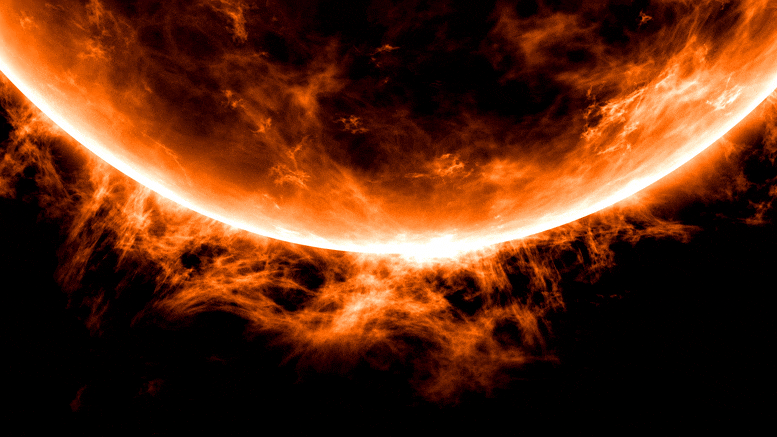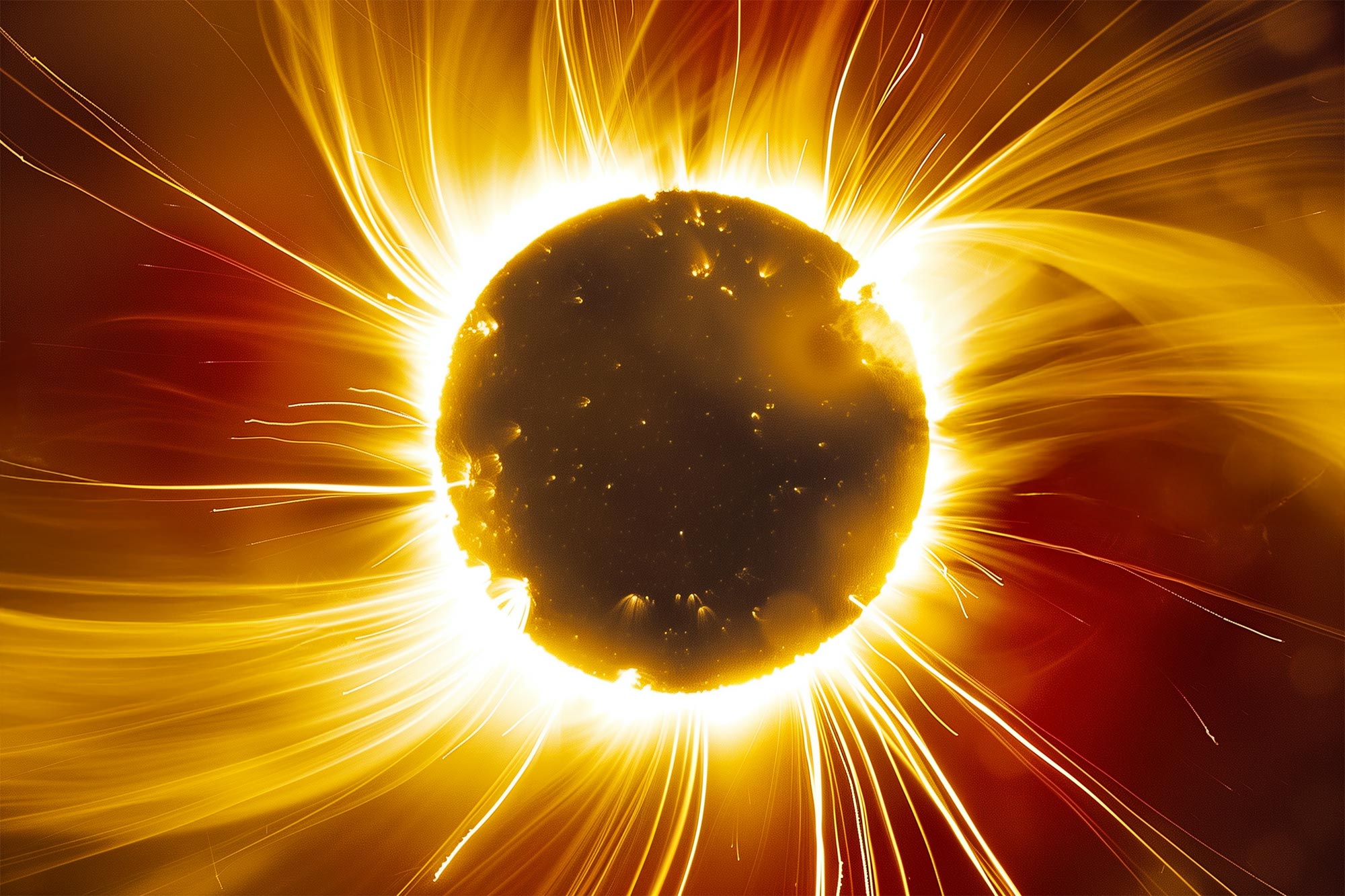New research examined the role of kinetic Alfvén waves in the intense heating of the solar corona. The study investigated how these waves transfer energy to plasma particles, shedding light on the long-standing mystery of why the Sun’s atmosphere is much hotter than its surface. Credit: SciTechDaily.com
A new study delved into the mysterious heating of the solar corona, significantly hotter than the Sun’s surface, through the lens of kinetic Alfvén waves (KAWs).
Research at the University of Alabama in Huntsville investigated how these waves transport energy and contribute to solar coronal heating. The study explored the role of electromagnetic energy in space plasmas, focusing on how KAWs interact with particles, ultimately transforming this energy into heat. This work could provide critical insights into solar physics, particularly in understanding the temperature disparity between the Sun’s surface and its atmosphere.
Unraveling the Mysteries of Solar Corona Heating
A researcher from The University of Alabama in Huntsville (UAH) explored critical aspects of a phenomenon called kinetic Alfvén waves (KAWs) to provide fresh insights into an age-old heliophysics mystery in a new study published in The 
The corona, or solar atmosphere, a region that extends eight million kilometers above the Sun’s surface and is characterized by extraordinarily high temperatures.
The Role of Kinetic Alfvén Waves in Solar Physics
“For decades, Alfvén waves have been proven to be the best candidates for transporting energy from one place to another,” Ayaz says, noting the potential role of KAWs in driving coronal heat. “This paper utilizes a novel approach to model energetic particles in space plasmas, as observed by satellites like Viking and Freja, to answer how the electromagnetic energy of the waves, interacting with particles, transforms into heat during the damping process as the waves move through space. Our investigation explores the perturbed electromagnetic fields, Poynting flux vector, and the power delivery rate of KAWs in the solar atmosphere.”
The corona, or solar atmosphere, is an enigmatic region surrounding our home star that extends far beyond the visible disk of the Sun, stretching some eight million kilometers above the Sun’s surface. Yet, the corona is also characterized by extraordinarily high temperatures, a mystery that has captivated astrophysicists for nearly seventy years.

Syed Ayaz, a graduate research assistant at the UAH Center for Space Plasma and Aeronomic Research (CSPAR). Credit: Syed Ayaz
Researching Alfvén Waves at Kinetic Scales
“Syed is one of our outstanding students who is just starting out on his research career,” says Dr. Gary Zank, CSPAR director and the Aerojet Rocketdyne chair of the UAH Department of Space Science. “His abiding interest in Alfvén waves, started while a student in Pakistan when working with his mentor, Dr. Imran A. Kahn, has now resulted in his investigation of these waves at very small scales, the so-called kinetic scale in a DOI: 10.3847/1538-4357/ad5bdc




















Discussion about this post